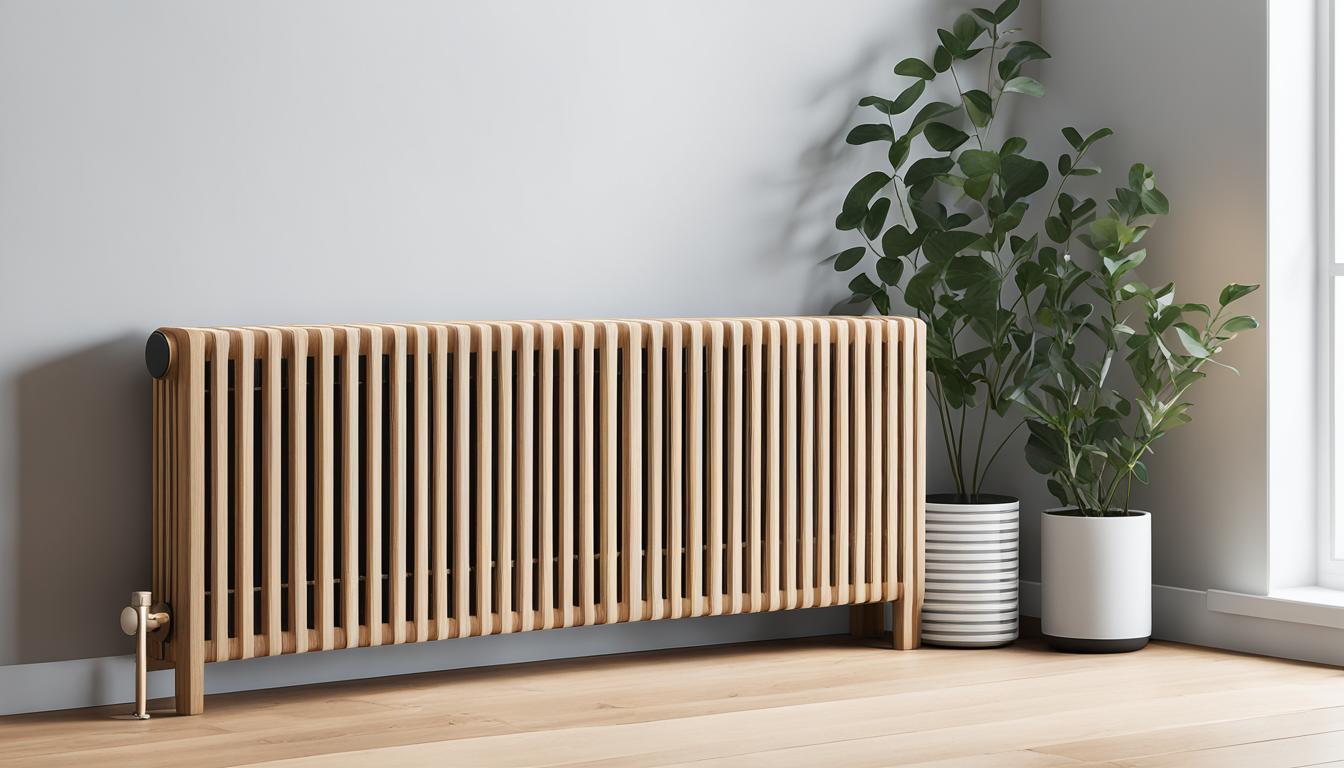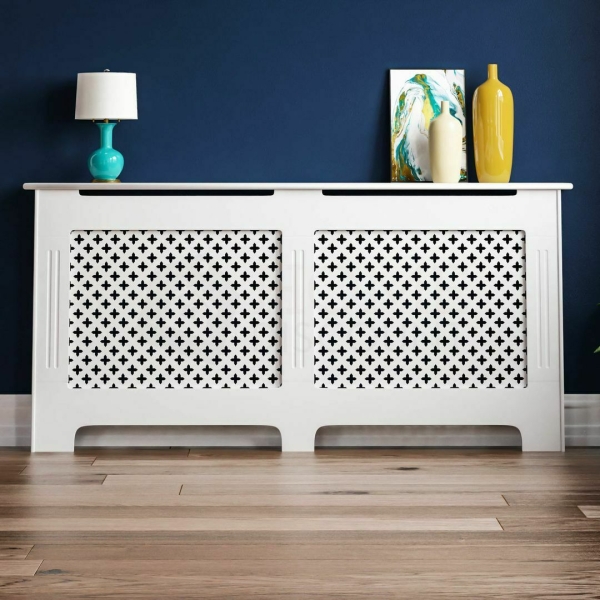Why Every Home Requirements a Radiator Cover for Improved Safety and Style
Why Every Home Requirements a Radiator Cover for Improved Safety and Style
Blog Article
Radiator Covers: Recognizing Products, Styles, and Benefits
Radiator covers offer both practical and aesthetic purposes within a home, offering a range of materials such as metal, mdf, and wood to fit numerous style preferences. As styles evolveâEUR" from traditional to contemporaryâEUR" these covers not just boost the aesthetic allure of a room yet additionally add to security and energy performance. Choosing the right radiator cover entails comprehending the nuances of products, layouts, and their linked advantages. This expedition increases vital concerns regarding how these elements incorporate into your living environment and what factors to consider need to lead your option procedure.
Sorts Of Products


Wood covers, typically crafted from woods such as oak or maple, provide a traditional, cozy appearance that matches typical insides. Their resilience and capability to be tarnished or painted contribute to their adaptability. Steel covers, usually made from steel or light weight aluminum, are preferred for their robustness and contemporary appearance, usually featuring smooth lines that improve modern rooms.
MDF, a manufactured wood product, is prominent for its cost-effectiveness and convenience of customization. It can be painted or completed to match existing decoration while supplying a smooth surface area. Plastic covers, while less common, are immune and light-weight to moisture, making them suitable for damp settings.
Inevitably, the choice of material for a radiator cover ought to line up with the home owner's design choices, functional demands, and the certain setting where the cover will certainly be mounted. Each product supplies a distinctive personality, ensuring that there is a choice to match every preference and setup.
Popular Style Styles
Highlighting visual allure, preferred design styles for radiator covers show a variety of tastes and interior design trends. Conventional styles commonly include complex woodwork and elaborate describing, making them ideal for vintage-inspired or traditional interiors. These covers generally incorporate sculpted components, providing a warm and inviting feeling to any type of space.
In contrast, modern styles concentrate on minimalist aesthetic appeals, characterized by tidy lines and downplayed beauty. Materials such as steel or smooth wood with a smooth coating are frequently used, allowing these covers to mix effortlessly into modern areas. Industrial styles, on the various other hand, embrace basic materials like subjected metal and concrete, including a strong declaration to loft or urban setups.
For those looking for an unique touch, bespoke styles supply personalization alternatives that cater to specific preferences, making it possible for homeowners to choose shades, patterns, and materials that match their style. Additionally, farmhouse-style covers incorporate rustic components, featuring distressed timber and simple types that stimulate a cozy, country appeal.
Advantages of Radiator Covers
Radiator covers not only improve the visual appeal of a space but additionally use several useful advantages that make them a beneficial enhancement to any type of home. Among the primary benefits is safety, especially in families with animals or kids. Covers lower the risk of burns from hot radiator surfaces, making certain a more secure setting.
Additionally, radiator covers can enhance energy efficiency. By directing warm right into the space rather than enabling it to escape, they aid preserve a regular temperature, reducing heating expenses gradually. This is particularly helpful in older homes here where radiator systems might be much less effective.
One more noteworthy benefit is noise reduction. Radiators can sometimes generate undesirable noises during operation, and covers can help smother these sounds, adding to a much more serene living area. Additionally, radiator covers can be functional, providing added storage space or screen space, thereby taking full advantage of the utility of often-overlooked locations.
Lastly, they can shield radiators from dust and debris, which can prevent effectiveness and increase upkeep needs. With these incorporated advantages, radiator covers become a sensible option for enhancing both the capability and style of any kind of home atmosphere.
Installation Factors To Consider
Installing radiator covers calls for cautious factor to consider to make sure both functionality and security (Radiator cover). First, examine the dimensions of your radiator and the surrounding area to ensure an appropriate fit. Precise dimensions are important; an uncomfortable cover can obstruct warm flow or produce safety and security risks
Following, evaluate the material of the cover. While timber supplies aesthetic allure, metal choices might provide much better durability and warm resistance. Take into consideration the weight of the cover as well; much heavier covers might require additional assistance or supports to avoid sagging or damage with time.
Ventilation is another important aspect. Covers should include ample airflow to stop getting too hot and maintain effective home heating. Seek designs with slats or perforations that enable warmth to flow without obstruction.
Additionally, guarantee that the cover is safely mounted to avoid mishaps, specifically in homes with youngsters or pets. Radiator cover. It's a good idea to adhere to the manufacturer's installation guidelines carefully and, if required, seek advice from an expert for intricate installments
Upkeep and Treatment Tips
Correct upkeep of radiator covers is crucial for guaranteeing their durability and ideal performance. Regular cleaning is essential; dust and particles can accumulate, blocking air movement and minimizing warm effectiveness. Utilize a soft, moist cloth or a microfiber duster to gently clean the surface try these out area, staying clear of extreme chemicals that might damage the surface. For painted or timber covers, take into consideration an ideal polish or protective layer pop over to this web-site to keep their look.
Examine the covers periodically for indicators of wear or damage, such as splits or peeling paint. Dealing with these concerns immediately can avoid more degeneration. Guarantee that the covers are firmly secured and check for any type of loose screws or installations, as vibrations from the radiator can loosen them gradually.
In colder months, prevent placing hefty objects or ornamental items on top of the radiator covers, as this can restrain warm circulation and cause unneeded stress to the framework. Consider seasonal maintenance by eliminating the covers for thorough cleaning and assessment during warmer months when the heating system is non-active. Taking on these simple care ideas will certainly enhance the performance and visual allure of your radiator covers, ensuring they serve their function properly for years to come.

Final Thought
In summary, radiator covers work as aesthetic and useful enhancements to residential rooms. The diverse array of materials, consisting of hardwoods, plastic, metal, and mdf, permits placement with different layout styles such as conventional, modern, industrial, and farmhouse. The advantages of these covers prolong past safety and power efficiency to include added storage and dirt defense. Careful factor to consider of installation and maintenance more guarantees the long life and effectiveness of radiator covers in any kind of home environment.
Radiator covers serve both aesthetic and functional objectives within a home, using an array of products such as wood, steel, and MDF to suit various style preferences. Selecting the appropriate radiator cover entails understanding the nuances of materials, designs, and their associated benefits.Highlighting aesthetic charm, prominent style styles for radiator covers show a variety of preferences and indoor style patterns.Radiator covers not just improve the aesthetic charm of a space however likewise use a number of functional advantages that make them a beneficial addition to any type of home. Think about the weight of the cover as well; much heavier covers may require additional assistance or supports to stay clear of drooping or damage over time.
Report this page